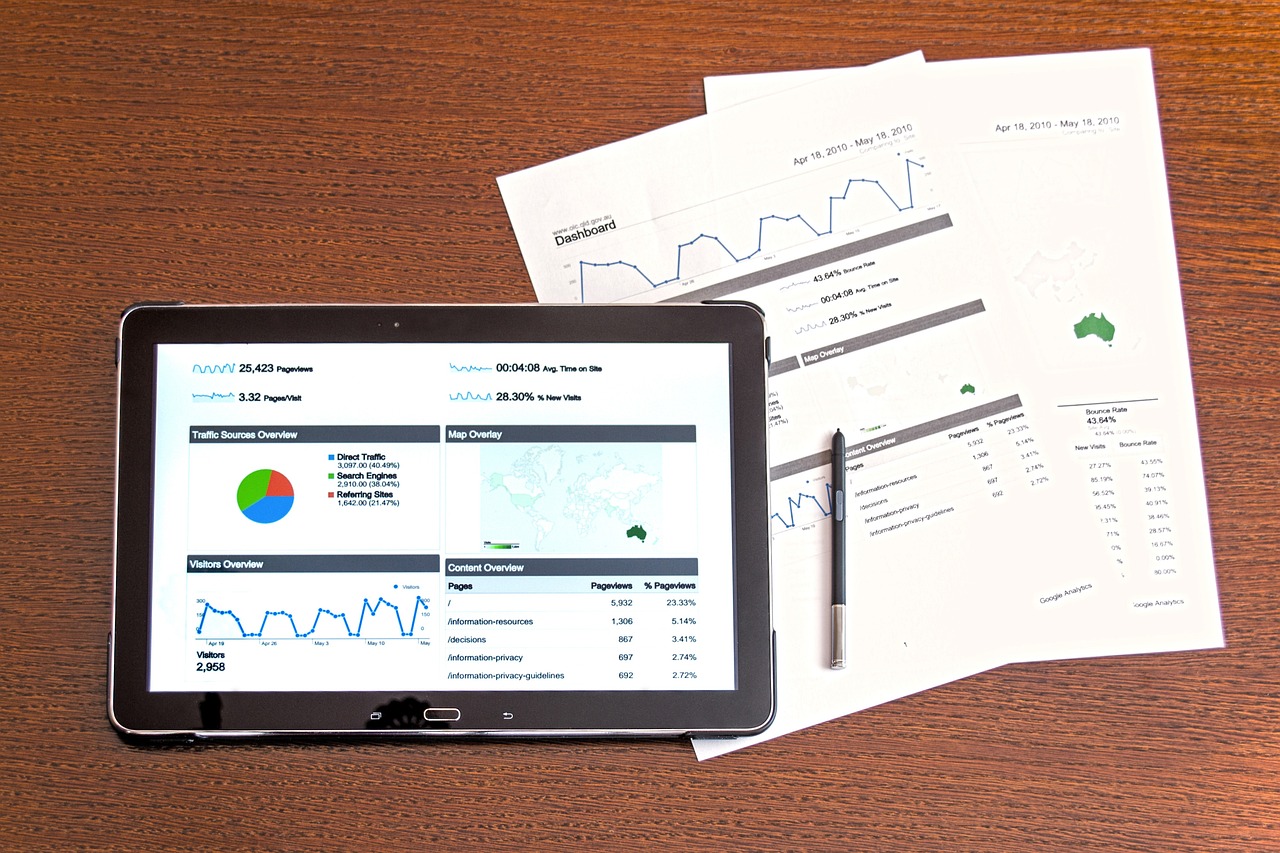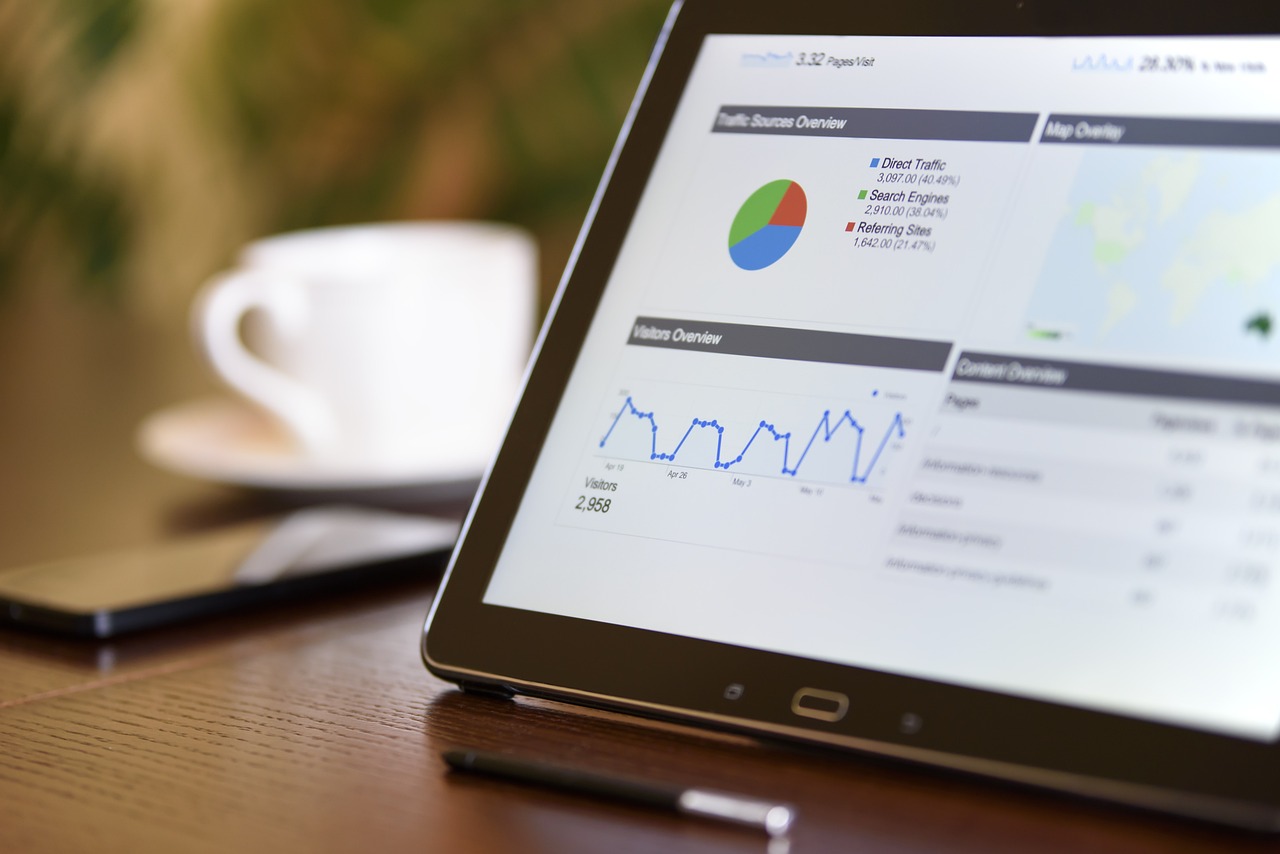The Role of Digital Tools in Managing Complex Projects
Managing complex projects can be a daunting task, requiring meticulous planning, coordination, and execution. In today's fast-paced business environment, the role of digital tools in project management has become increasingly crucial. These tools not only streamline project processes but also enhance collaboration, communication, and decision-making, ultimately leading to successful project outcomes.
One of the key benefits of digital tools in project management is their ability to enhance communication and collaboration among team members. Regardless of their physical location, team members can easily connect, share updates, and work together in real-time. This level of connectivity fosters a sense of unity and ensures that everyone is on the same page, leading to improved project coordination and efficiency.
Furthermore, digital tools play a vital role in streamlining project planning and tracking. Project managers can create detailed project plans, set milestones, assign tasks, and track progress all in one centralized platform. This not only simplifies the planning process but also provides a clear overview of the project status, enabling better decision-making and resource allocation.
Moreover, digital tools are instrumental in improving data management and analysis. By efficiently storing, organizing, and analyzing project data, managers gain valuable insights into project performance, trends, and areas for improvement. These insights empower managers to make informed decisions and adjustments throughout the project lifecycle, ensuring successful project delivery.
When it comes to resource allocation and budgeting, digital tools offer functionalities that optimize resource utilization, monitor budget allocations, and identify cost-saving opportunities. By automating budget tracking and resource management, project managers can ensure that projects are completed within budget constraints, without compromising on quality.
Another significant advantage of digital tools is their ability to automate routine tasks and workflows. By automating repetitive processes, team members can focus on more strategic project activities, leading to increased productivity and efficiency. This automation also minimizes errors and ensures consistency in project deliverables.
Real-time reporting and transparency are also key features of digital tools in project management. These tools generate instant reports on project progress, risks, and issues, providing stakeholders with up-to-date information. This transparency fosters trust among team members and stakeholders, enabling timely decision-making to address any challenges that may arise.
In addition, digital tools facilitate risk management and mitigation by offering features for identifying, assessing, and addressing project risks. Project managers can proactively manage uncertainties, develop mitigation strategies, and ensure project success by leveraging these tools to anticipate and mitigate potential risks.
Lastly, digital tools support remote and distributed teams by providing remote access capabilities. Team members working from different locations can collaborate seamlessly, share updates, and coordinate tasks effectively. This remote accessibility fosters teamwork, boosts productivity, and ensures that project timelines are met, regardless of geographical barriers.

Enhancing Communication and Collaboration
Digital tools play a crucial role in enhancing communication and collaboration within project teams, irrespective of their geographical locations. By leveraging digital platforms, team members can engage in real-time discussions, share updates, and collaborate seamlessly, fostering a sense of unity and teamwork. This improved communication leads to better project coordination and increased efficiency, as everyone stays on the same page regarding project goals and progress.
Moreover, digital tools offer features such as instant messaging, video conferencing, and file sharing, enabling team members to interact effortlessly and address issues promptly. With the ability to communicate effectively, project teams can overcome challenges more efficiently and work towards achieving common objectives. The accessibility and convenience provided by these tools break down communication barriers, making collaboration a smooth and productive process.
Furthermore, digital tools facilitate the sharing of documents, feedback, and updates in a centralized location, ensuring that all team members have access to the latest information. This centralized approach enhances transparency and accountability, as project stakeholders can track communication history and decisions made throughout the project lifecycle. By promoting open communication and collaboration, digital tools create a dynamic environment where ideas flow freely, leading to innovative solutions and successful project outcomes.

Streamlining Project Planning and Tracking
When it comes to managing complex projects, one of the key challenges is ensuring efficient planning and tracking of various tasks and milestones. This is where digital tools play a crucial role in streamlining the entire process. By harnessing the power of advanced project management software, teams can enhance their planning and tracking capabilities, leading to improved project outcomes.
Imagine having a centralized platform where project managers can create detailed project plans, set clear milestones, assign tasks to team members, and track progress in real-time. This level of visibility and organization is essential for keeping the project on track and ensuring that all team members are aligned towards the common goal. With digital tools, project planning becomes more structured and transparent, allowing for better coordination and collaboration among team members.
Moreover, these tools offer features that enable project managers to prioritize tasks, allocate resources efficiently, and monitor the overall progress of the project. By having all project-related information in one place, teams can easily identify bottlenecks, address issues promptly, and make data-driven decisions to optimize project performance.
Additionally, digital tools provide the flexibility to adapt to changing project requirements and timelines. Project managers can easily adjust schedules, reassign tasks, and update project plans on the go, ensuring that the project stays on course despite unexpected challenges or shifts in priorities.
By streamlining project planning and tracking through digital tools, teams can boost their productivity, enhance communication and collaboration, and ultimately deliver successful outcomes within the set timelines and budget constraints.
Overall, the integration of digital tools in project management revolutionizes the way complex projects are planned, executed, and monitored, offering a competitive edge to organizations striving for efficiency and excellence in their project delivery.

Improving Data Management and Analysis
Managing complex projects requires a delicate balance of coordination, organization, and foresight. In today's fast-paced business environment, the role of digital tools in project management has become increasingly vital. These tools have revolutionized the way teams collaborate, plan, track, and analyze data, leading to more efficient and successful project outcomes.
Effective data management and analysis are crucial components of successful project management. Digital tools play a key role in improving these aspects by providing project managers with advanced capabilities to store, organize, and analyze data. By centralizing data storage and streamlining access, these tools ensure that project teams have real-time access to the information they need to make informed decisions.

Enhancing Resource Allocation and Budgeting
Complex projects require efficient management to ensure successful outcomes. In today's fast-paced business environment, digital tools play a crucial role in enhancing project management processes. Let's delve into how these tools revolutionize the way projects are planned, executed, and monitored.
Resource allocation and budgeting are key aspects of project management that can make or break a project. Digital tools offer advanced features that streamline these processes, ensuring optimal utilization of resources and adherence to budget constraints.
By leveraging digital tools, project managers can effectively allocate resources based on skills, availability, and project requirements. These tools provide real-time visibility into resource availability, helping teams avoid overallocation or underutilization of resources.
Moreover, digital tools enable comprehensive budget tracking and analysis. Project managers can set budget milestones, monitor expenses, and identify areas where cost savings can be achieved. This proactive approach to budget management ensures that projects stay on track financially.
Additionally, these tools facilitate scenario planning and what-if analysis, allowing project managers to assess the impact of budget changes and make informed decisions to optimize resource allocation.
Overall, digital tools empower project teams to make data-driven decisions regarding resource allocation and budgeting, ultimately enhancing project efficiency and ensuring successful project delivery.
Q: Are digital tools suitable for all types of projects, regardless of size or complexity?
A: Yes, digital tools can be customized to meet the specific needs of different projects, whether small-scale or large-scale. The key is to select tools that align with the project requirements and team dynamics.
Q: How can digital tools improve collaboration among team members working remotely?
A: Digital tools offer features such as virtual collaboration spaces, instant messaging, and video conferencing, enabling remote team members to communicate effectively and collaborate in real time. This fosters teamwork and ensures seamless project coordination.
Q: Can digital tools help in monitoring project progress and identifying potential risks?
A: Absolutely. Digital tools provide real-time reporting capabilities, allowing project managers to track project progress, identify bottlenecks, and mitigate risks proactively. By leveraging data analytics and visualization tools, project managers can gain valuable insights to drive project success.

Automating Routine Tasks and Workflows
Automation plays a crucial role in streamlining project workflows by taking over repetitive tasks that would otherwise consume valuable time and resources. Imagine having a digital assistant that diligently handles mundane assignments, freeing up your team to focus on more critical aspects of the project. This automation not only reduces the chances of human error but also boosts overall efficiency and productivity.
By leveraging digital tools to automate routine tasks, project managers can ensure that workflows run smoothly without constant manual intervention. These tools can be programmed to execute specific actions based on triggers, schedules, or predefined conditions, ensuring that essential tasks are completed promptly and accurately. This level of automation not only saves time but also minimizes the risk of oversights or delays.
Furthermore, automation enhances collaboration within the team by providing a standardized framework for task execution. Team members can easily track the progress of automated tasks, identify bottlenecks, and coordinate efforts more effectively. This streamlined workflow not only accelerates project timelines but also fosters a sense of cohesion and shared responsibility among team members.
Additionally, automated workflows contribute to data accuracy and consistency by eliminating manual data entry and manipulation. Digital tools can seamlessly integrate with various systems and applications, ensuring that information flows smoothly across different platforms without the risk of discrepancies. This integration not only reduces the likelihood of data errors but also enhances the overall reliability of project data.
In summary, automating routine tasks and workflows through digital tools revolutionizes project management by increasing efficiency, reducing errors, and fostering collaboration. By embracing automation, project managers can unlock new levels of productivity and innovation, propelling their projects towards success in the fast-paced digital landscape.

Ensuring Real-Time Reporting and Transparency
Real-time reporting and transparency are crucial aspects of successful project management. By utilizing digital tools, project managers can access up-to-date information on project progress, risks, and issues instantly. This immediate access to data allows for quick decision-making and proactive problem-solving, ensuring that projects stay on track and any potential roadblocks are addressed promptly.
Moreover, digital tools provide a transparent view of the project status to all stakeholders involved. Through automated reporting features, project updates are readily available, fostering open communication and accountability among team members. This transparency not only builds trust within the team but also enables stakeholders to have a clear understanding of the project's direction and any challenges it may be facing.
Imagine having a dashboard that displays real-time project metrics, showing key performance indicators and milestones at a glance. This level of visibility empowers project managers to identify areas that require attention and make data-driven decisions to drive the project forward. Additionally, stakeholders can access this information anytime, anywhere, ensuring everyone is on the same page and working towards the same goals.

Facilitating Risk Management and Mitigation
Facilitating Risk Management and Mitigation involves utilizing digital tools to identify, assess, and address potential risks that may impact the successful completion of a project. These tools provide project managers with a systematic approach to proactively manage uncertainties and ensure that mitigation strategies are in place to prevent or minimize the impact of risks.
One key aspect of using digital tools for risk management is the ability to centralize risk assessment processes. By consolidating all risk-related information in a single platform, project teams can easily track and prioritize risks based on their likelihood and potential impact. This centralized approach enhances visibility and enables quick decision-making to address high-priority risks promptly.
Furthermore, digital tools offer features for conducting risk analysis, such as scenario planning and sensitivity analysis. These tools allow project managers to simulate different risk scenarios, evaluate their potential consequences, and develop contingency plans to mitigate adverse effects. By leveraging data-driven insights, project teams can make informed decisions to reduce the likelihood of risks materializing.
In addition to risk assessment and analysis, digital tools facilitate the implementation of risk mitigation strategies. These tools enable project managers to assign responsibilities for risk mitigation actions, set deadlines for implementation, and track progress in real-time. By establishing clear accountability and monitoring mechanisms, project teams can ensure that mitigation measures are effectively executed to minimize the impact of identified risks.
Moreover, digital tools support continuous monitoring and review of risk management activities throughout the project lifecycle. By providing automated alerts and notifications for critical risk events, these tools help project teams stay vigilant and responsive to emerging risks. Regular reviews of risk mitigation efforts enable project managers to adapt strategies as needed, ensuring that risk management remains proactive and effective.
In summary, digital tools play a crucial role in facilitating risk management and mitigation by offering centralized risk assessment, data-driven analysis, efficient implementation of mitigation strategies, and continuous monitoring of risk-related activities. By leveraging these tools effectively, project teams can enhance their ability to anticipate and address potential risks, ultimately increasing the likelihood of project success.

Supporting Remote and Distributed Teams
Supporting remote and distributed teams is a crucial aspect of modern project management, especially in today's globalized work environment. Digital tools play a vital role in enabling seamless collaboration and coordination among team members who may be working from different locations or time zones. By providing remote access capabilities, these tools break down geographical barriers and foster a sense of unity among team members, regardless of where they are located.
One key benefit of digital tools in supporting remote teams is the ability to centralize project information and communication channels. This centralized platform allows team members to access project updates, share documents, and communicate in real-time, promoting transparency and efficiency in project workflows. Additionally, digital tools offer features such as video conferencing, instant messaging, and virtual whiteboards, which mimic the experience of face-to-face interactions, even when team members are miles apart.
Moreover, digital tools enhance the visibility of individual contributions within a remote team, ensuring that each member's efforts are recognized and valued. By tracking tasks, milestones, and progress in a shared online environment, team leaders can monitor performance effectively and provide timely feedback to remote team members. This level of visibility fosters accountability and motivation, driving team members to excel in their roles despite physical distance.
Furthermore, digital tools support remote and distributed teams by offering robust security features to protect sensitive project data and communications. With encryption, access controls, and secure authentication mechanisms, these tools safeguard information from unauthorized access and cyber threats, ensuring the confidentiality and integrity of project-related information.
In conclusion, the use of digital tools in supporting remote and distributed teams revolutionizes the way projects are managed and executed in today's dynamic business landscape. By leveraging these tools effectively, organizations can overcome the challenges posed by remote work arrangements and harness the full potential of their global talent pool, driving innovation and success in complex projects.
Frequently Asked Questions
- Can digital tools replace traditional project management methods entirely?
Digital tools are designed to enhance and streamline project management processes, but they may not completely replace traditional methods. While digital tools offer numerous benefits, some aspects of project management may still require manual oversight and human intervention.
- How secure is the data stored in digital project management tools?
Most reputable digital project management tools prioritize data security and employ encryption protocols to safeguard sensitive information. It's essential to choose tools from trusted providers and follow best practices for data protection to ensure the security of project data.
- Are digital tools suitable for small-scale projects or only for large, complex projects?
Digital tools can be beneficial for projects of all sizes, including small-scale initiatives. While some features may be more useful for managing complex projects, the scalability and flexibility of digital tools make them adaptable to the needs of various project sizes and types.
- How can digital tools help in improving team collaboration and communication?
Digital tools offer features such as real-time messaging, file sharing, and collaborative workspaces that facilitate seamless communication and collaboration among team members. By providing a centralized platform for interaction, digital tools enhance teamwork and productivity.
- What are the key considerations when selecting digital tools for project management?
When choosing digital tools for project management, factors such as ease of use, scalability, integration capabilities, data security, and team requirements should be taken into account. It's important to assess the specific needs of the project and select tools that align with those requirements.
















